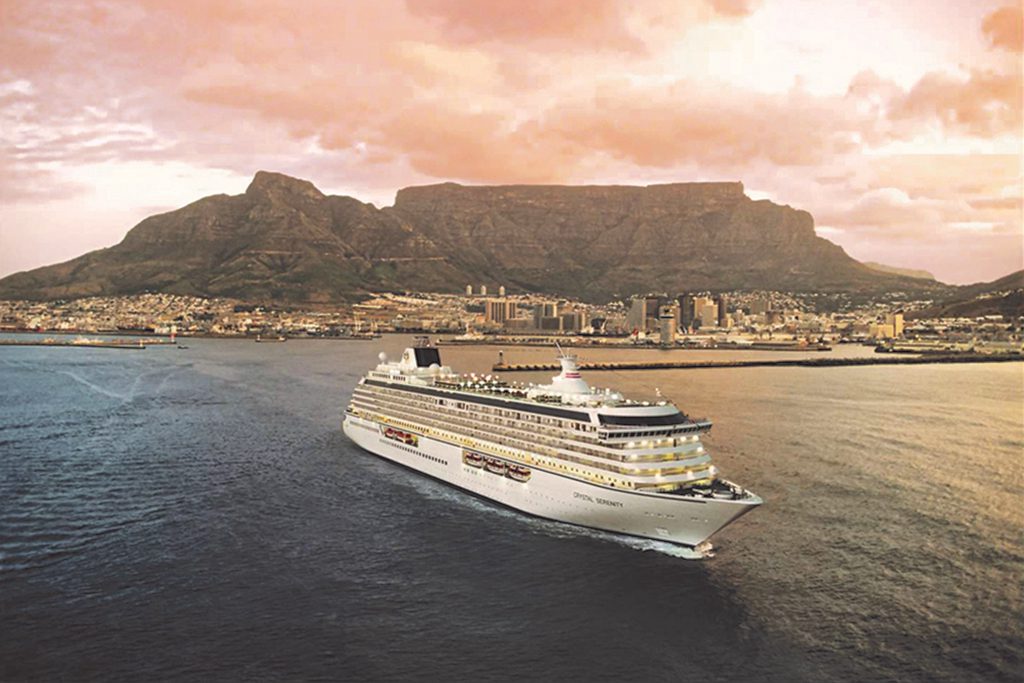Skift Take
Overcrowding in traditional markets and a growing demand for more adventurous itineraries will help Africa attract more cruise lines to its ports. But key to any future growth is understanding that cruise ships require more than just bricks and mortar on the quayside.
African cities are eyeing a bigger slice of the global cruise market, with upgraded terminal buildings attracting an ever-growing number of international cruise ships to ports as varied as Mombasa and Cape Town.
African ports for years have been little more than an occasional stop on an extended world cruise, but global cruise lines are increasingly expanding their destinations and extending their time in local waters, with profound benefits for local economies reliant on tourism.
Key to the recent growth has been considerable investment in cruise terminal facilities. In 2015 the management of the V&A Waterfront in Cape Town invested $4 million into revamping the precinct’s Cruise Terminal, and over the past four years the facility has welcomed more than 150 vessels and upward of 260,000 passengers. According to Cape Town Tourism, the projected value of the cruise tourism industry between 2017 and 2027 is estimated to be in the region of $15 million.
In the South African city of Durban — where Italian brand MSC Cruises already operates a popular schedule of domestic and regional cruises aimed at the middle-tier South African market — construction on a new $13.9 million cruise terminal is already underway. MSC Cruises has also invested in shore facilities in Mozambique, a popular stop for its itineraries in east Africa.
Further north, Kenya is also hoping for a slice of the growth, with a new cruise terminal in the port city of Mombasa due to be completed in early 2020.
The Kenya Ports Authority (KPA) “has prioritized cruise ships calling at the port of Mombasa due to the high impact created in the coastal region … the KPA has committed its resources to modernize the cruise terminal to meet international standards,” Daniel Manduku, managing director of the KPA, told Tourism Update.
While new facilities may encourage the occasional stop, what’s more valuable to cities is the consistent business that comes from creating a true cruise destination. But to accomplish that, destination marketers and tourism authorities need to realize that a seamless experience on dry land is as important as a shiny new terminal for the captain to berth at.
“Many countries put a lot of emphasis on their port facilities, but that’s not the most important factor in bringing a ship to a destination. It’s what’s happen beyond the port that counts,” said George Argyropoulos, chief executive officer of Cruises International, the largest cruise line representative in southern Africa, representing nine lines including Royal Caribbean International, Crystal Cruises, and Oceania.
Despite its infamously rough seas and location at the southern tip of Africa, Cape Town is one city getting it right, with impressive growth in international airlift — United launched direct flights from Newark to the city Dec. 15 — and advanced tourism services and infrastructure on dry land.
“We see Cape Town as a curtain-raiser port, and it has a lot of attractions for foreign visitors to spend a few nights before or after they cruise,” said Argyropoulos. “What we’re seeing now for the first time is ships coming out and spending a mini-season in South Africa.”
The Azamara Quest in early 2020 will offer a series of 10-night voyages along the South African coastline from its base in Cape Town, while the German line AIDA Cruises will homeport the AIDAmira in Cape Town for two months, offering eight 14-day voyages in the region.
That adds up to good business for the city’s wider tourism industry.
“The weather in the Cape does limit our cruise season, so we’re never going to be the Caribbean, but we can carve out a niche that provides for certain kinds of travelers and props up an important part of our tourism market,” said Tim Harris, CEO of the regional economic development agency Wesgro.
To further develop the industry, Wesgro has established Cruise Cape Town — a collaborative group made up of players in the tourism industry, local government, and the ports authority. It’ll work to market the city through events like Seatrade Cruise Global but will also focus on simple logistics.
“You have to make sure the destination functions, and that the experience of arriving and getting stuck into tourism offering is seamless,” added Harris.
With improved port facilities and developing tourism infrastructure, there’s enormous potential for African cities to tap into the global cruise industry, said Argyropoulos. “There are many ports in Europe where the size and number of ships is limited, so there’s a pressing need for new destinations. Africa is fairly undiscovered, and cruise lines are now really starting to discover southern Africa.”
Richard Holmes is a Skift contributor based in Cape Town.
The Daily Newsletter
Our daily coverage of the global travel industry. Written by editors and analysts from across Skift’s brands.
Have a confidential tip for Skift? Get in touch
Photo credit: The Crystal Serenity departing the port in Cape Town. Crystal Cruises
